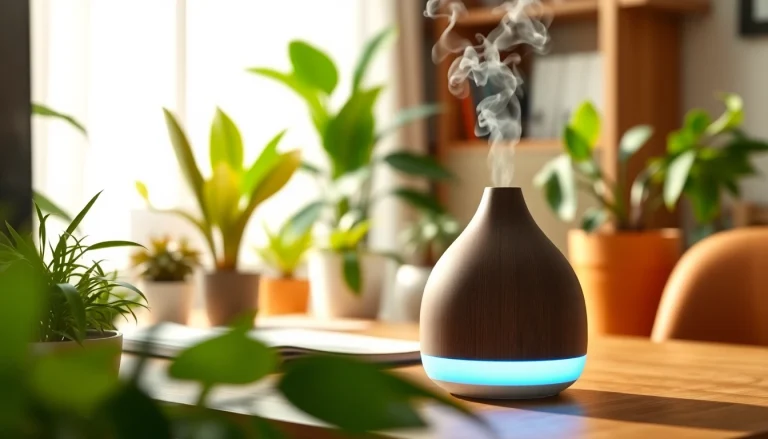Understanding Robot Vacuums: A Comprehensive Guide
The evolution of home cleaning is revolutionized through robotics. Among these innovations, the robot vacuum stands out as a game changer. Gone are the days when manual sweeping and dusting occupied valuable time. With the integration of advanced technology into vacuuming, maintaining clean floors can occur seamlessly, allowing users to focus on more meaningful tasks. This comprehensive guide provides insights on robot vacuums—what they are, how they operate, and what to consider when selecting the perfect model for your home.
1. What is a Robot Vacuum?
A robot vacuum is an autonomous cleaning device that uses sensors and advanced technologies to navigate and clean floors without human intervention. Often referred to as “robovacs,” these devices can efficiently manage daily cleaning tasks, making them a valuable addition to modern households. Most models are designed for versatility, accommodating various surfaces such as hardwood, tiles, and carpets. The convenience offered by robot vacuums has made them a popular choice among consumers looking to streamline their cleaning routines.
2. Key Features to Look For in a Robot Vacuum
Selecting the right robot vacuum involves understanding the key features that enhance usability and cleaning efficiency. Here are some critical factors to consider when evaluating options:
- Suction Power: Look for models with adjustable suction settings, especially if you have carpets or rugs that require extra power to remove embedded debris.
- Navigation Technology: Advanced navigation systems like LIDAR or cameras create maps of your home, resulting in more systematic cleaning and reduced missed spots.
- Battery Life: A longer battery life allows the vacuum to cover more ground in a single charge, which is vital for larger homes.
- App Connectivity: Features like scheduling, cleaning modes, and maintenance notifications through a mobile app enhance the overall user experience.
- Self-Cleaning and Maintenance Features: Some modern models come with self-cleaning capabilities, which reduce the need for manual cleaning and upkeep.
- Filters: HEPA filters are ideal for allergen management, as they capture fine dust and allergens, improving indoor air quality.
3. How Robot Vacuums Work: Technology Behind the Clean
Understanding the technology that powers robot vacuums is crucial for appreciating their capabilities. Most robot vacuums are equipped with various sensors, including cliff sensors to prevent falls, wall sensors for edge cleaning, and dirt sensors to focus on heavily soiled areas. The cleaning process generally comprises three main steps:
- Detection: The robot scans and maps the environment using its sensors, creating a layout of the rooms to optimize its cleaning path.
- Cleaning: The vacuum uses rotating brushes and suction mechanisms to capture dirt and debris as it navigates through the space.
- Emptying: Depending on the model, the vacuum may automatically return to its docking station for charging or to empty its collection bin in self-cleaning models.
The Best Robot Vacuums on the Market Today
1. Top Brands and Their Unique Offerings
The heyday of robot vacuums has ushered in numerous brands with distinct offerings. Here are some of the top players in the market:
- iRobot Roomba: Known for its strong suction power and user-friendly app, the Roomba models are highly rated for their cleaning efficacy. Models like the Roomba i7+ offer advanced mapping features and self-emptying capabilities.
- Roborock: Roborock vacuums like the S7 series provide two-in-one vacuuming and mopping functions, coupled with excellent battery life and smart home integration.
- Ecovacs: The Ecovacs range includes the Deebot series, which features advanced navigation technology and comprehensive cleaning options, catering specifically to pet owners.
- Narwal: The Narwal Flow model combines both vacuuming and mopping functions, offering users an advanced option that navigates and maintains clean floors with minimal effort.
2. Comparing Prices: Budget-Friendly Options vs. Premium Models
When considering a robot vacuum, price points can vary significantly based on features and brand reputation. Budget-friendly models typically range from $200 to $400, often lacking advanced navigation and higher suction capabilities. However, they can still perform basic cleaning functions effectively.
Premium models, priced from $600 to over $1,000, incorporate features like advanced sensors, smart home connectivity, and powerful suction. They generally offer extensive warranty support and customer service. It’s essential to evaluate your cleaning needs against the investment level to find a suitable match.
3. Real User Reviews: What Customers are Saying
Engaging with real user reviews can provide valuable insights into the performance of specific models, highlighting both strengths and weaknesses. Many users praise the features of high-end models for their intelligence and thoroughness; for instance, Roomba fans often express satisfaction with their cleaning efficiency and app functionality. Conversely, budget models may receive feedback regarding navigational issues or weaker suction rates for heavy messes.
Social platforms and consumer forums offer extensive discussions and comparisons, making them excellent resources for potential buyers. A comprehensive look at reviews can help clarify features that matter most to individual users, informing more prudent buying decisions.
Choosing the Right Robot Vacuum for Your Lifestyle
1. Assessing Your Cleaning Needs
Before making a purchase, assess your specific cleaning needs based on your home’s structure and lifestyle. Consider factors like:
- Home Size and Layout: Autofeatures and battery life should align with your home’s dimensions to ensure adequate cleaning.
- Flooring Type: If your home features a mix of surfaces, prioritize vacuums that can seamlessly transition between them.
- Allergen Management: If allergies are a concern, models with advanced filtration systems and HEPA filters might be tax efficient.
2. Robot Vacuums for Pet Owners: Special Features
Pet owners will find that certain features in robot vacuums can be immensely beneficial. Look for models that include:
- High Suction Power: For picking up pet hair and debris effectively.
- Self-cleaning Brushes: This feature reduces the need for manual brush maintenance, preventing hair tangles.
- Scheduled Cleanings: The ability to schedule cleanings ensures that pet messes are managed regularly and efficiently.
3. Smart Home Integration: Compatibility with Other Devices
The ability to integrate robot vacuums with smart home devices is an increasing trend. Seamless compatibility with platforms such as Amazon Alexa or Google Assistant enhances functionality, allowing users to control their vacuums via voice commands or mobile apps. Consumers should review compatibility features before purchase to ensure cohesive smart home management.
Maintenance and Care Tips for Your Robot Vacuum
1. Routine Maintenance: Keeping Your Vacuum in Top Condition
To prolong your robot vacuum’s lifespan and maintain performance, establish a routine maintenance schedule:
- Regularly Empty the Dust Bin: Frequent emptying of the dust bin prevents overfilling, ensuring consistent suction power.
- Clean Brushes and Filters: Inspect and clean the brushes and filters periodically to prevent blockages and maintain suction efficiency.
- Check Sensors: Wipe sensors with a soft cloth to eliminate obstructions that may affect navigation.
2. Troubleshooting Common Issues
Understanding common issues and their solutions can be beneficial.
For instance, if the vacuum fails to charge, inspect the docking station for dust or debris blocking the connections. If it often gets stuck, reposition furniture to create a clearer path. Finally, maintain the software up to date through app notifications to improve overall performance.
3. When to Replace or Upgrade Your Robot Vacuum
Deciding when to replace or upgrade your robot vacuum typically hinges on performance issues and technological advancements. Signs indicating replacement include diminishing suction power, frequent breakdowns, and lack of compatibility with newer features. If your vacuum lacks beneficial features that newer models offer—such as advanced navigation or AI integration—consider upgrading for improved efficiency and ease of use.
The Future of Robot Vacuums: Innovations to Watch
1. Advances in Navigation Technology
The future of robot vacuums lies significantly in enhancing navigation technology. Developments in LIDAR and AI could enable more efficient mapping of complex home environments. This technology promises to weave through furniture with precision and avoid obstacles in real-time, minimizing missed spots and overlap.
2. Eco-friendly Models and Sustainability in Design
As environmental concerns gain traction, there is an upward trend towards eco-friendly robot vacuums. Manufacturers may focus on using sustainable materials in production and connecting the vacuum’s operation to greener energy systems. There’s also potential in devices that conserve energy without sacrificing performance.
3. The Role of AI in Enhancing Cleaning Efficiency
Artificial intelligence is on the verge of significantly impacting the operational efficiency of robot vacuums. AI-powered devices will likely learn individual user routines and preferences, adapting cleaning schedules and methods accordingly. These advancements could lead to truly autonomous cleaning systems tailored to user lifestyles.






